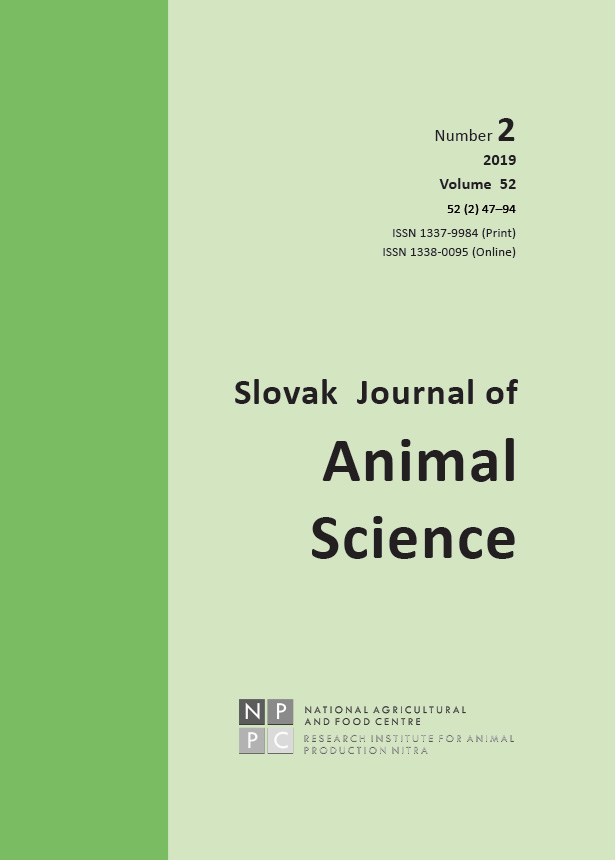STAUROSPORINE-INDUCED APOPTOSIS: ANALYSIS BY DIFFERENT ANNEXIN V ASSAYS
Keywords:
cell culture, apoptosis, staurosporine, annexin V assay, flow cytometryAbstract
Annexin V assay is a well-known method for the evaluation of cell apoptosis. However, there is a wide range of available kits at the market that are of different quality and price. In this study, staurosporine-induced apoptosis model was used in order to compare low-cost and high-cost Annexin V detection kits from three different producers. Briefly, two human cell lines (KG-1 and NKT) were treated with staurosporine for 1, 3 and 6 hours and then evaluated for the apoptosis induction using 3 different detection kits by flow cytometry. Both cell lines showed significant (P<0.05) increase in cell apoptosis after 3 hours (20% and 13%, respectively) and 6 hours (50% and 20%, respectively) of incubation with staurosporine. No significant changes in the proportion of apoptotic cells were observed by comparing the data detected using low-cost or high-cost Annexin V assays. In conclusion, tested low-cost Annexin V detection kits could be safely used for an objective and fast flow cytometric assessment of the apoptosis in human or animal cells.
References
Abe, K., Yoshida, M., Usui, T., Horinouchi, S. & Beppu, T. (1991). Highly synchronous culture of fibroblasts from G2 block caused by staurosporine, a potent inhibitor of protein kinases. Experimental Cell Research, 192(1), 22–127. https://doi.org/10.1016/0014-4827(91)90166-R
Antonsson, A. & Persson, J. L. (2009). Induction of apoptosis by staurosporine involves the inhibition of expression of the major cell cycle proteins at the G(2)/M checkpoint accompanied by alterations in Erk and Akt kinase activities. Anticancer Research, 29(8), 2893-2898. Retrieved from http://ar.iiarjournals.org/content/29/8/2893.long
Arur, S., Uche, U. E., Rezaul, K., Fong, M., Scranton, V., Cowan, A. E., Mohler, W. & Han, D. K. (2003). Annexin I is an endogenous ligand that mediates apoptotic cell engulfment. Developmental Cell, 4(4), 587–598. https://doi.org/10.1016/S1534-5807(03)00090-X
Belmokhtar, C. A., Hillion, J. & Ségal-Bendirdjian, E. (2001). Staurosporine induces apoptosis through both caspase-dependent and caspase-independent mechanisms. Oncogene, 20(26), 3354–3362.http:// doi.org/10.1038/sj.onc.1204436
Bratton, D. L., Fadok, V. A., Richter, D. A., Kailey, J. M., Guthrie, L. A. & Henson, P. M. (1997). Appearance of phosphatidylserine on apoptotic cells requires calcium-mediated nonspecific flip-flop and is enhanced by loss of the aminophospholipid translocase. The Journal of Biological Chemistry, 272, 26159–26165. https://doi: 10.1074/jbc.272.42.26159
Bruno, S., Ardelt, B., Skierski, J. S., Traganos, F. & Darzynkiewicz, Z. (1992). Different effects of staurosporine, an inhibitor of protein kinases, on the cell cycle and chromatin structure of normal and leukemic lymphocytes. Cancer Research, 52(2), 470-473. Retrieved from http://cancerres.aacrjournals.org/content/52/2/470.long
Crissman, H. A., Gadbois, D. M., Tobey, R. A. & Bradbury, E. M. (1991). Transformed mammalian cells are deficient in kinase-mediated control of progression through the G1 phase of the cell cycle. Proceedings of the National Academy of Sciences of the United States of America, 88(17), 7580–7584. Retrieved from http://www.jstor.org/stable/2357735
Elmore, S. (2007). Apoptosis: A Review of Programmed Cell Death. Toxicologic Pathology, 35(4), 495–516. https://doi.org/10.1080/01926230701320337
Jacobsen, M. D., Weil, M. & Raff, M. C. (1996). Role of Ced-3/ICE-family proteases in staurosporine-induced programmed cell death. Journal of Cell Biology, 133(5), 1041-1051. Retrieved from http://jcb.rupress.org/content/133/5/1041.long
Kabir, J., Lobo, M. & Zachary, I. (2002). Staurosporine induces endothelial cell apoptosis via focal adhesion kinase dephosphorylation and focal adhesion disassembly independent of focal adhesion kinase proteolysis. The Biochemical Journal, 367(Pt 1), 145–155. http:// doi.org/10.1042/BJ20020665
Koopman, G., Reutelingsperger, C. P., Kuijten, G. A., Keehnen, R. M., Pals, S. T. & van Oers, M. H. (1994). Annexin V for flow cytometric detection of phosphatidylserine expression on B cells undergoing apoptosis. Blood, 84(5), 1415–1420. Retrieved from http://www.bloodjournal.org/content/bloodjournal/84/5/1415.full.pdf?sso-checked=true
Krohn, A. J., Preis, E. & Prehn, J. H. (1998). Staurosporine-induced apoptosis of cultured rat hippocampal neurons involves caspase-1-like proteases as upstream initiators and increased production of superoxide as a main downstream effector. Journal of Neuroscience, 18(20), 8186–8197. https://doi.org/10.1523/JNEUROSCI.18-20-08186.1998
Nicholson, D. W. & Thornberry, N. A. (1997). Caspases: Killer proteases. Trends in Biochemical Sciences, 22(8), 299–306. https://doi.org/10.1016/S0968-0004(97)01085-2
Norbury, C. J. & Hickson, I. D. (2001). Cellular responses to DNA damage. Annual Review of Pharmacology and Toxicology, 41, 367–401. https://doi.org/10.1146/annurev.pharmtox.41.1.367
Okazaki, T., Kato, Y., Mochizuki, T., Tashima, M., Sawada, H. & Uchino, H. (1988). Staurosporine, a novel protein kinase inhibitor, enhances HL-60-cell differentiation induced by various compounds. Exerimental Hematology, 16(1), 42–48.
Okuda, T., Sawada, H., Kato, Y., Yumoto, Y., Ogawa, K., Tashima, M. & Okuma, M. (1991). Effects of protein kinase A and calcium/phospholipiddependent kinase modulators in the process of HL-60 cell differentiation: their opposite effects between HL-60 cell and K-562 cell differentiation. Cell Growth & Differentiation, 2(9), 415–420. Retrieved from http://cgd.aacrjournals.org/cgi/reprint/2/9/415
Porter, A. G., Ng, P. & Janicke, R. U. (1997). Death substrates come alive. Bioessays, 19(6), 501–507. https://doi.org/10.1002/bies.950190609
Schwartz, G. K., Redwood, S. M., Ohnuma, T., Holland, J. F., Droller, M. J. & Liu, B. C. (1990). Inhibition of invasion of invasive human bladder carcinoma cells by protein kinase C inhibitor staurosporine. Journal of the National Cancer Institute, 82(22), 1753–1756.
van Engeland, M., Nieland, L. J., Ramaekers, F. C., Schutte, B. & Reutelingsperger, C. P. (1998). Annexin V-Affinity assay: A review on an apoptosis detection system based on phosphatidylserine exposure. Cytometry, 31(1), 1–9. https://doi:10.1002/(SICI)1097-0320(19980101)31:1<1::AID-CYTO1>3.0.CO;2-R
Xia, Z., Dickens, M., Raingeaud, J., Davis, R. J. & Greenberg, M. E. (1995). Opposing effects of ERK and JNK-p38 MAP kinases on apoptosis. Science, 270(5240), 1326–1331. http:// doi.org/10.1126/science.270.5240.1326
Yue, T. L., Wang, C., Romanic, A. M., Kikly, K., Keller, P., DeWolf, W. E. Jr., Hart, T. K., Thomas, H. C., Storer, B., Gu, J. L., Wang, X. & Feuerstein, G. Z. (1998). Staurosporine-induced apoptosis in cardiomyocytes: A potential role of caspase-3. Journal of Molecular and Cellular Cardiology, 30(3), 495–507. https://doi.org/10.1006/jmcc.1997.0614

